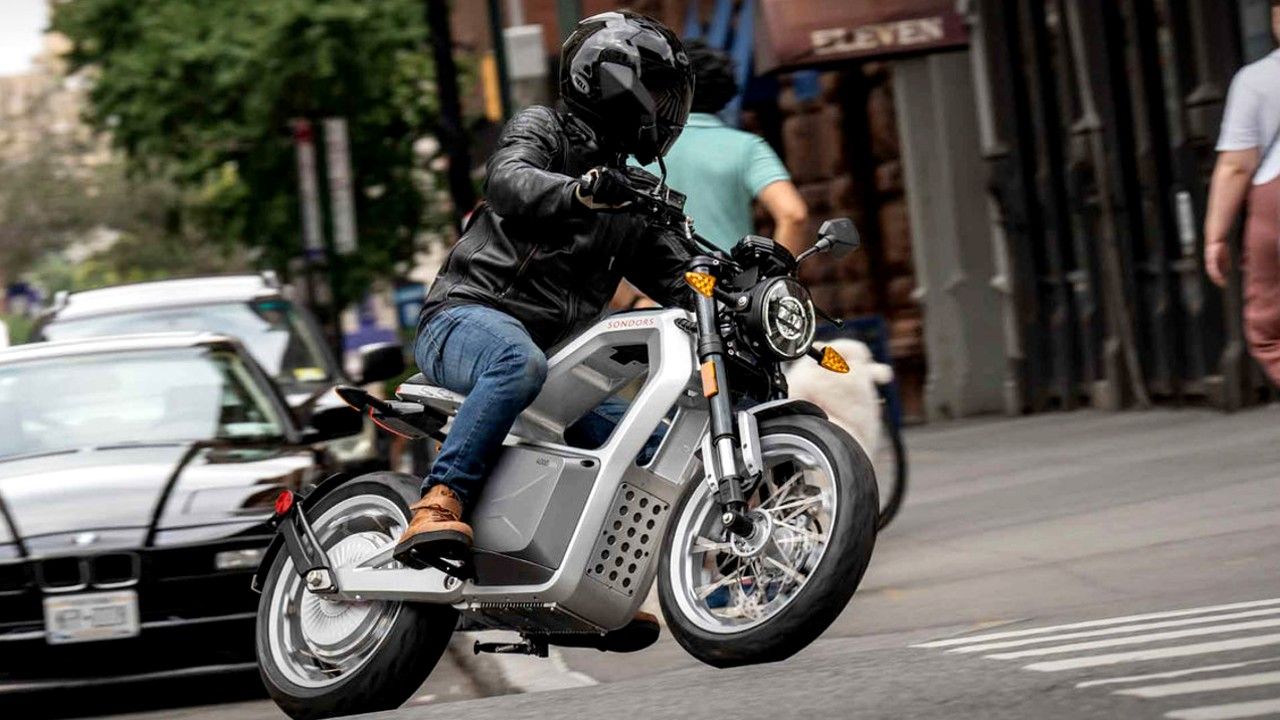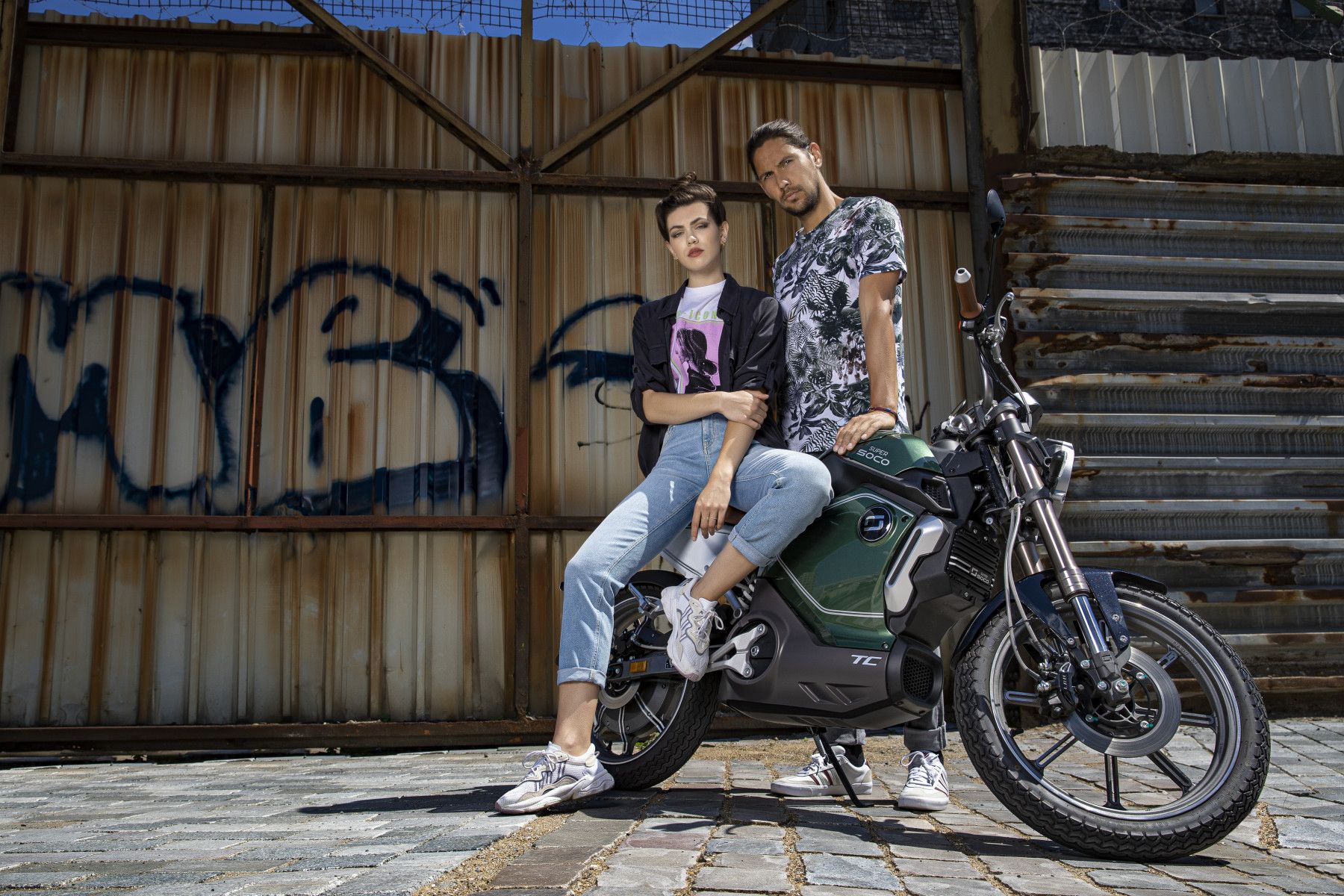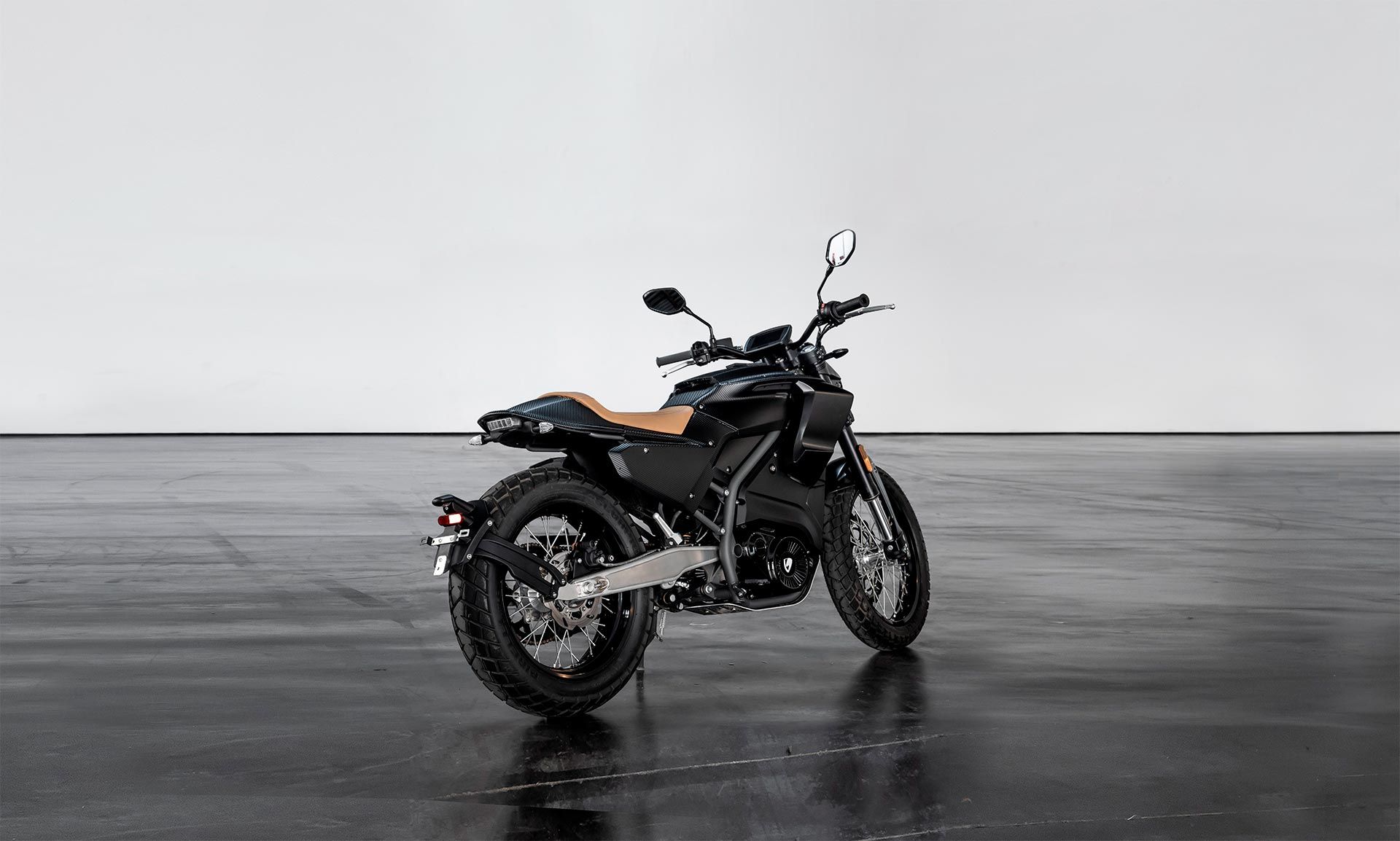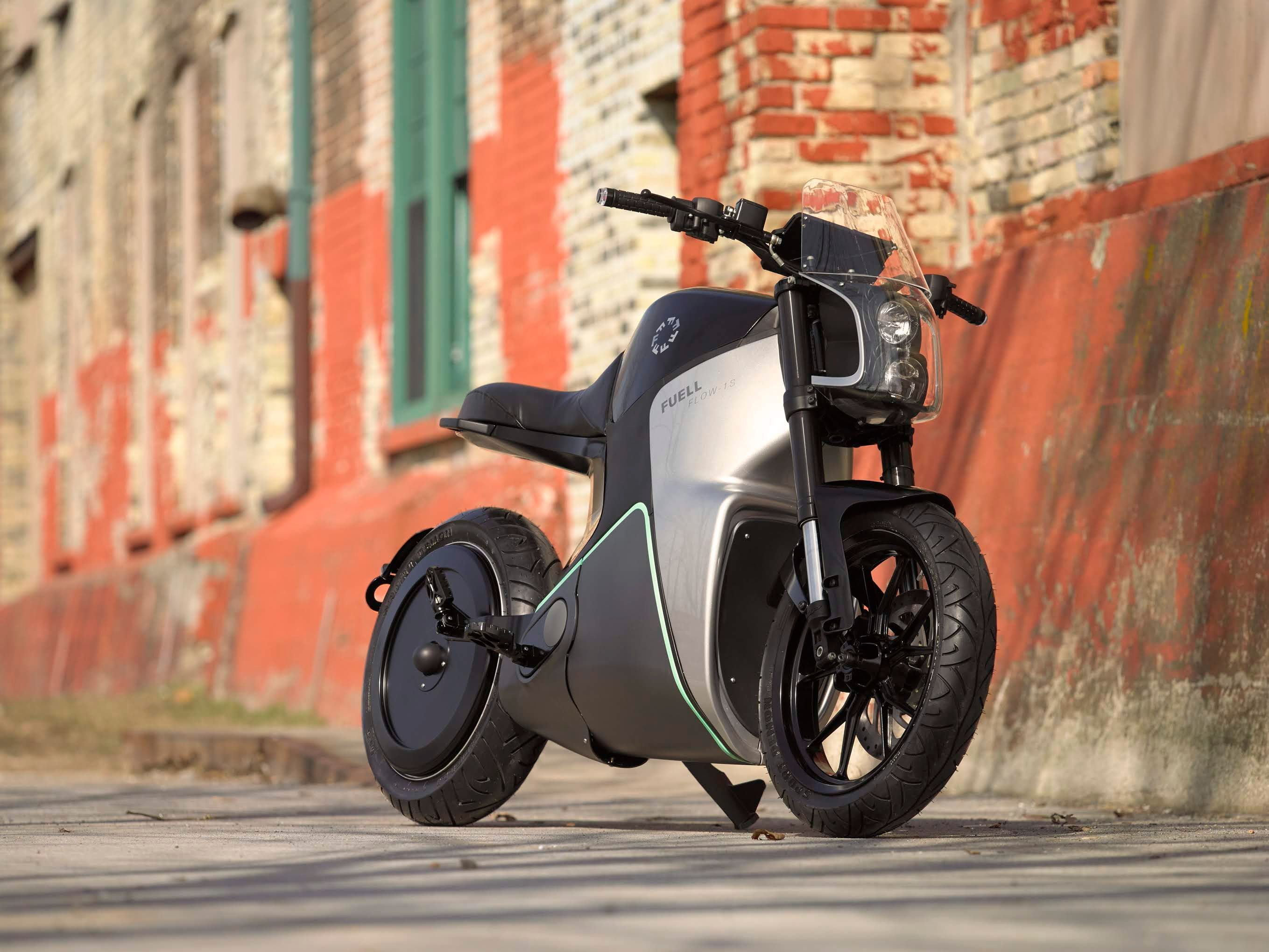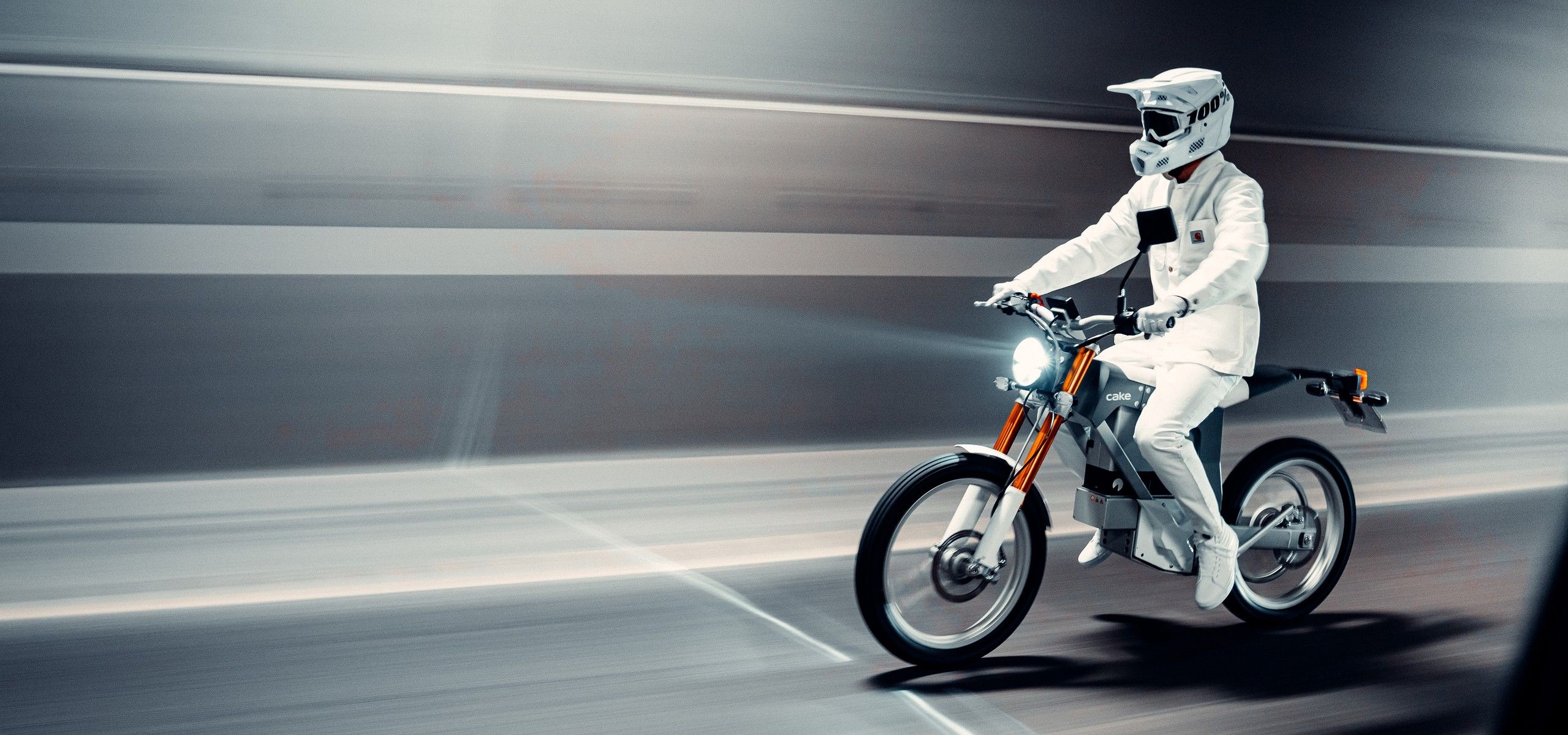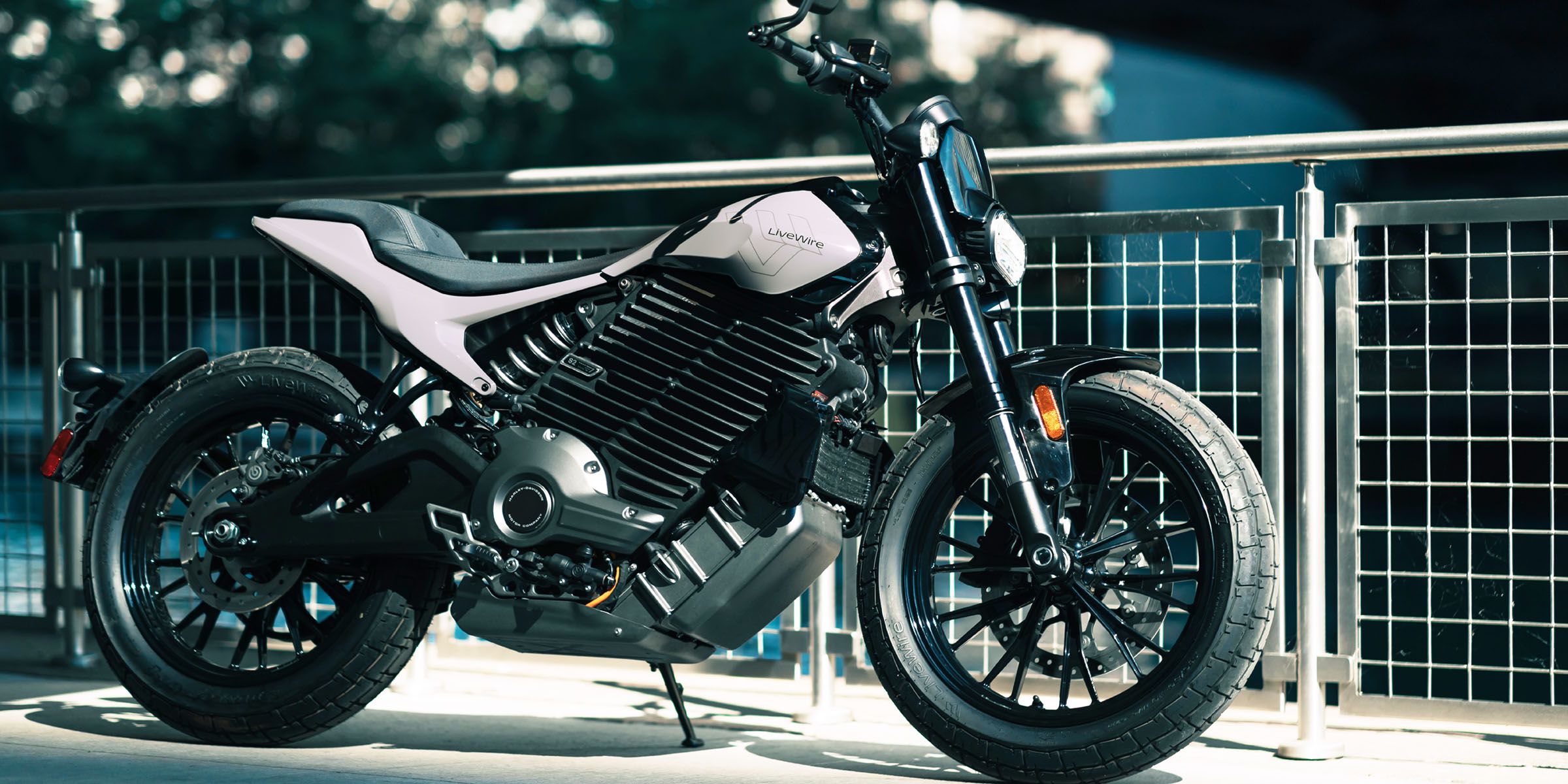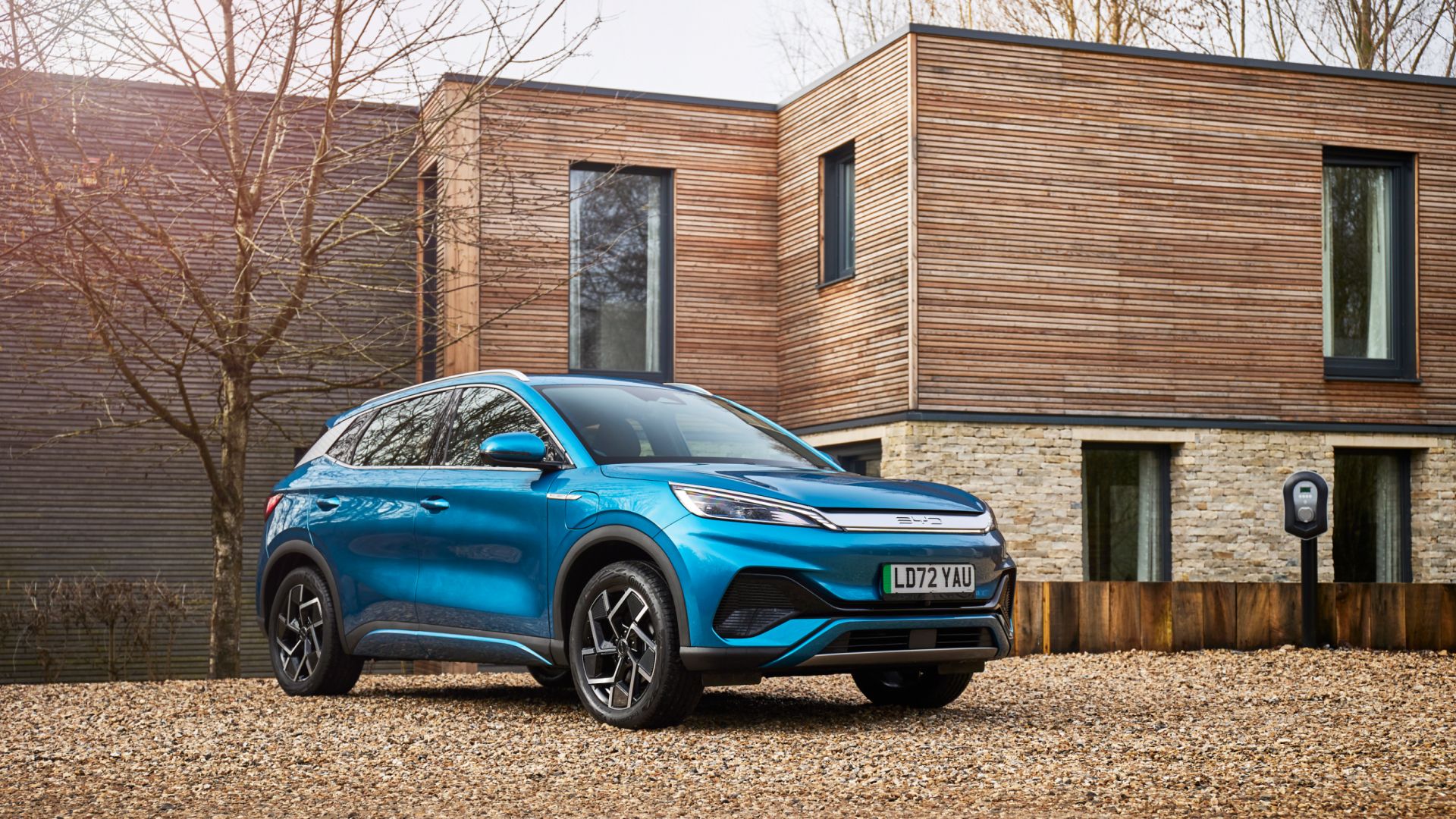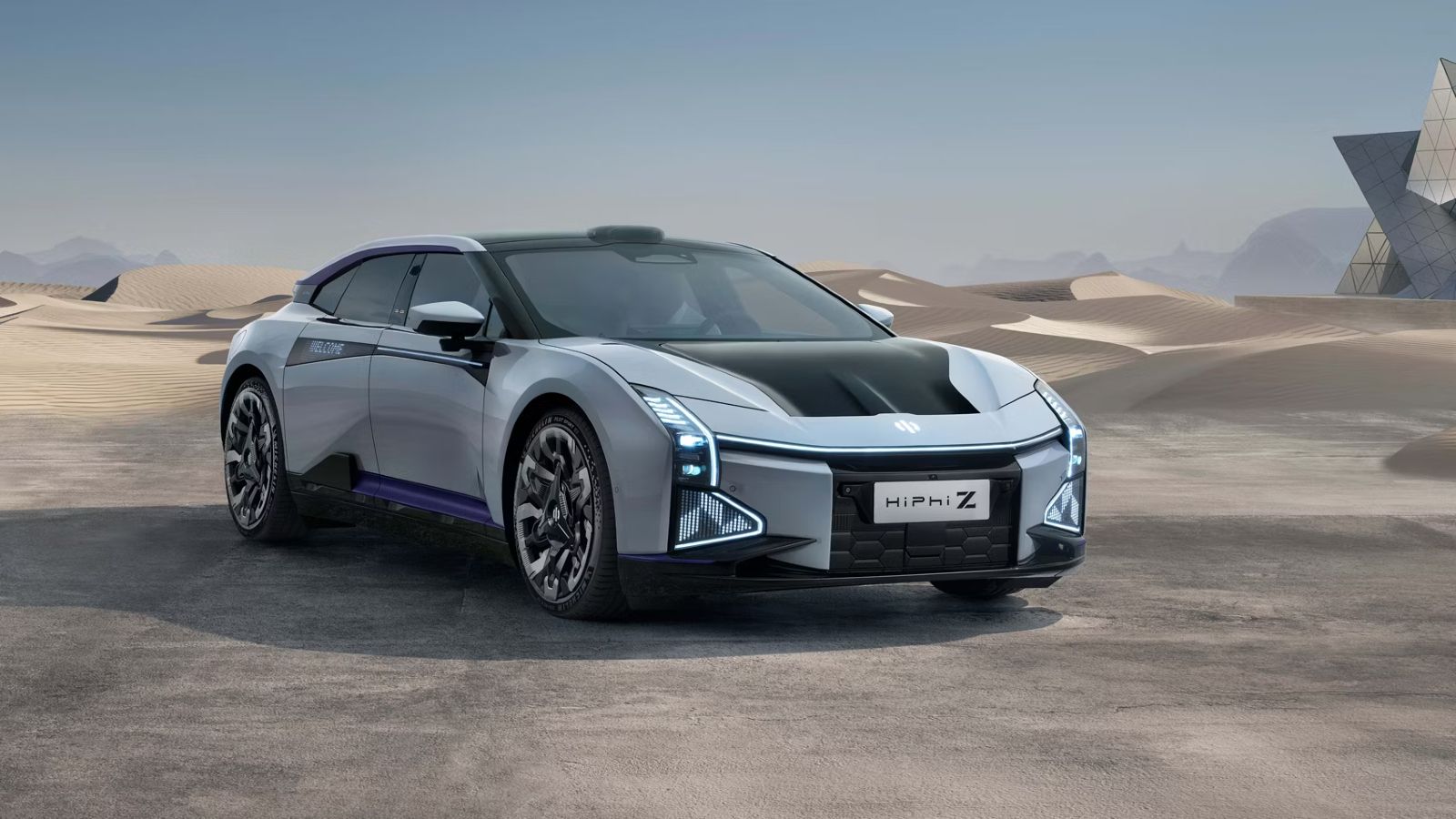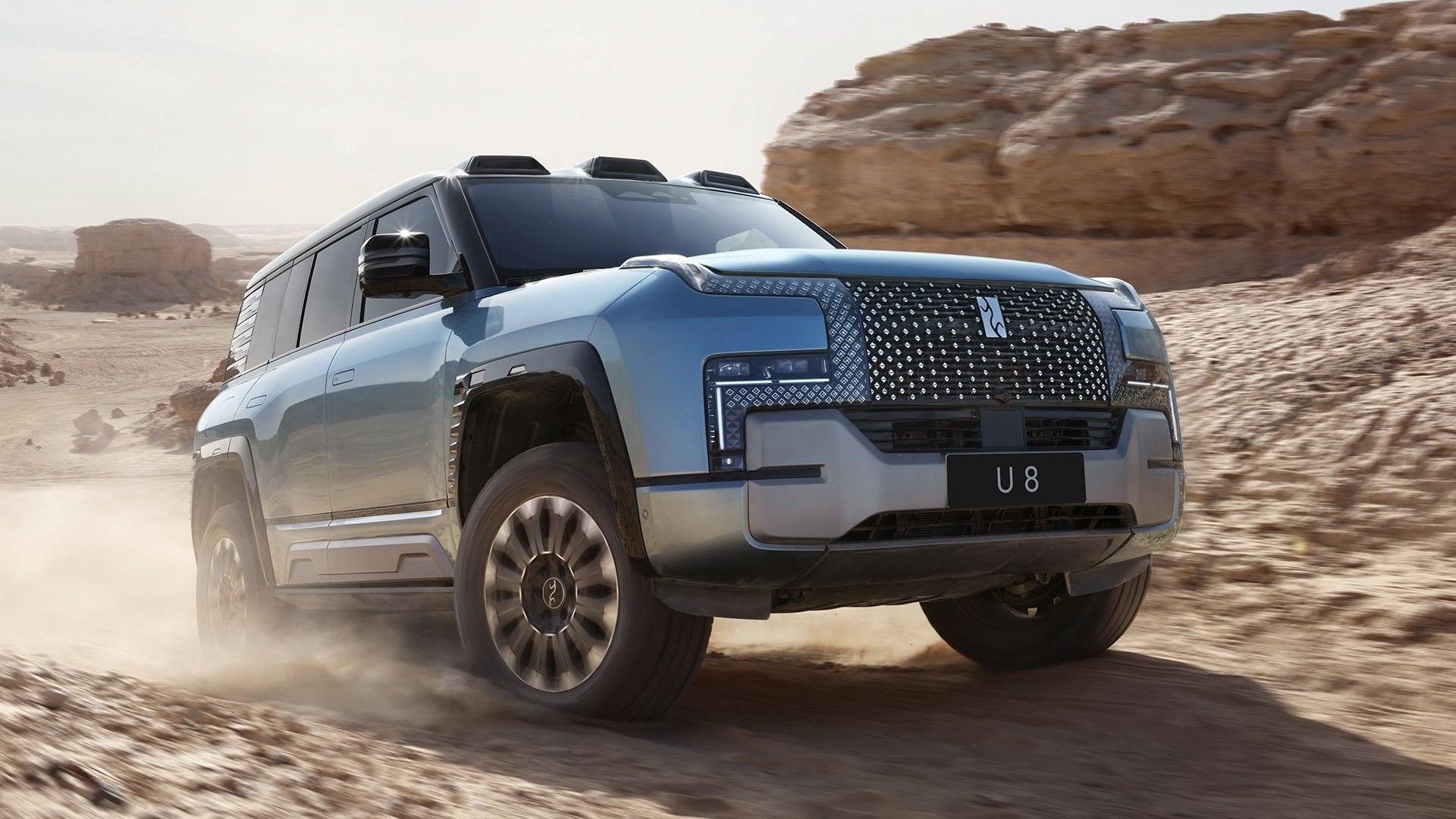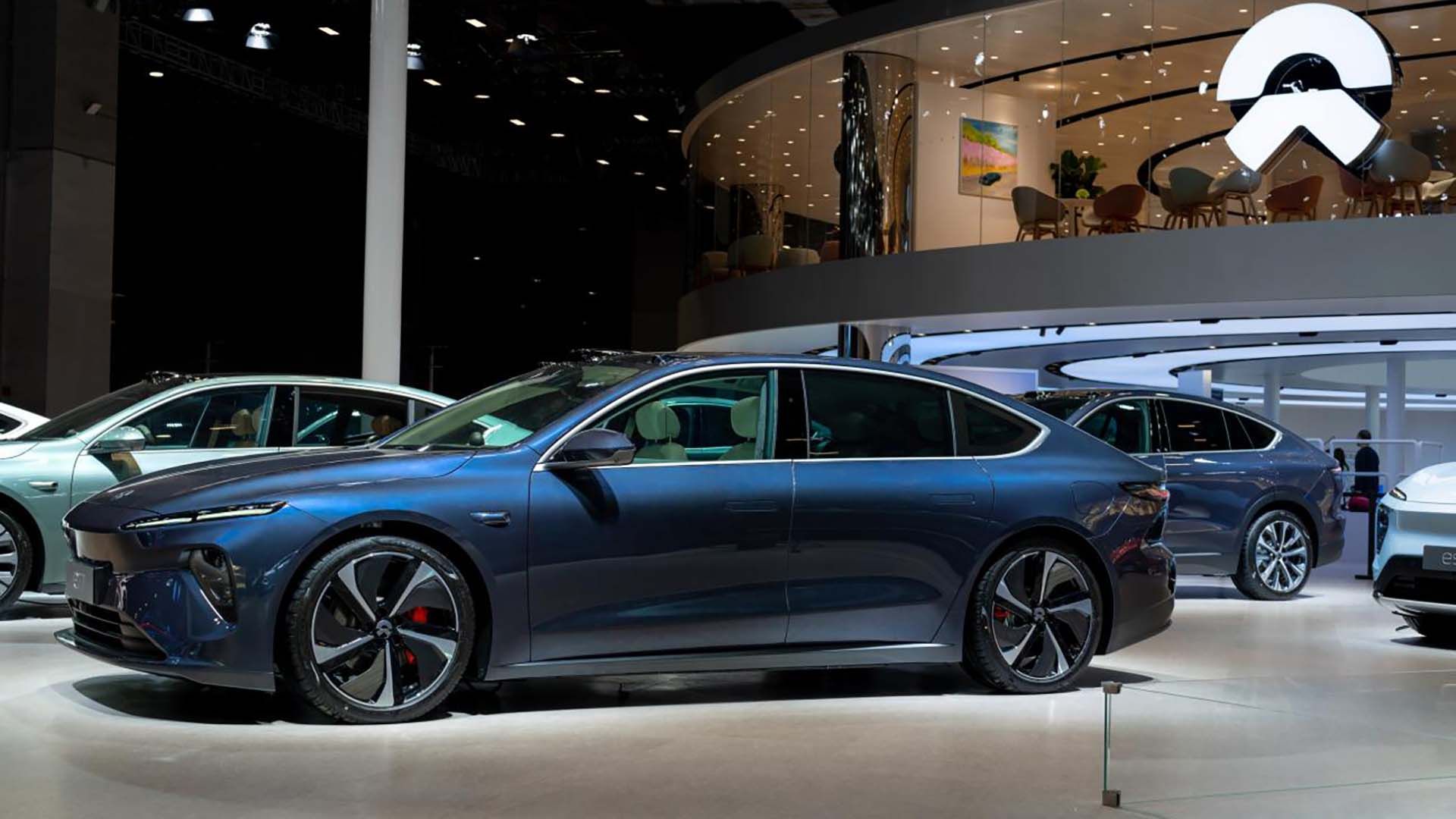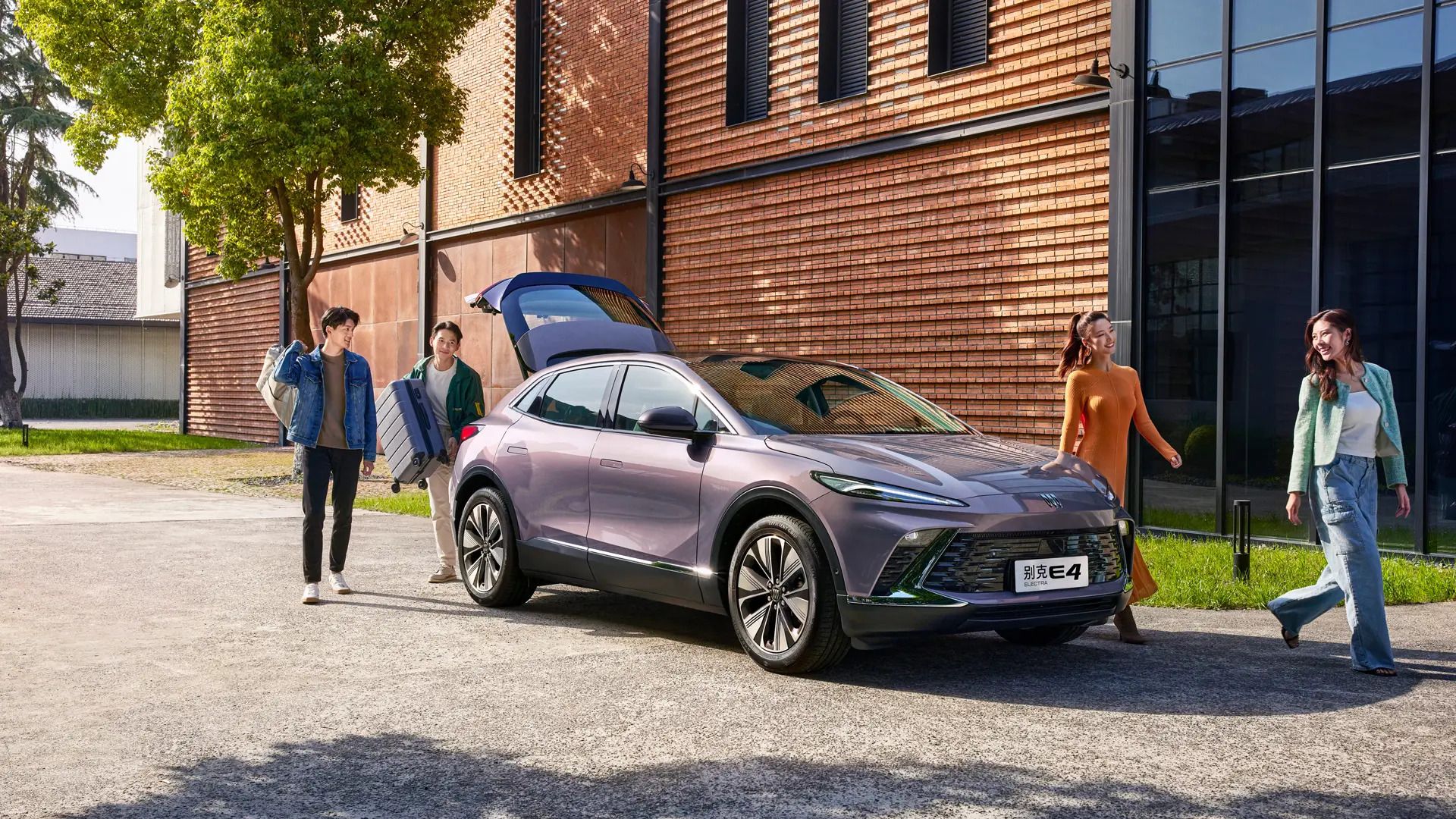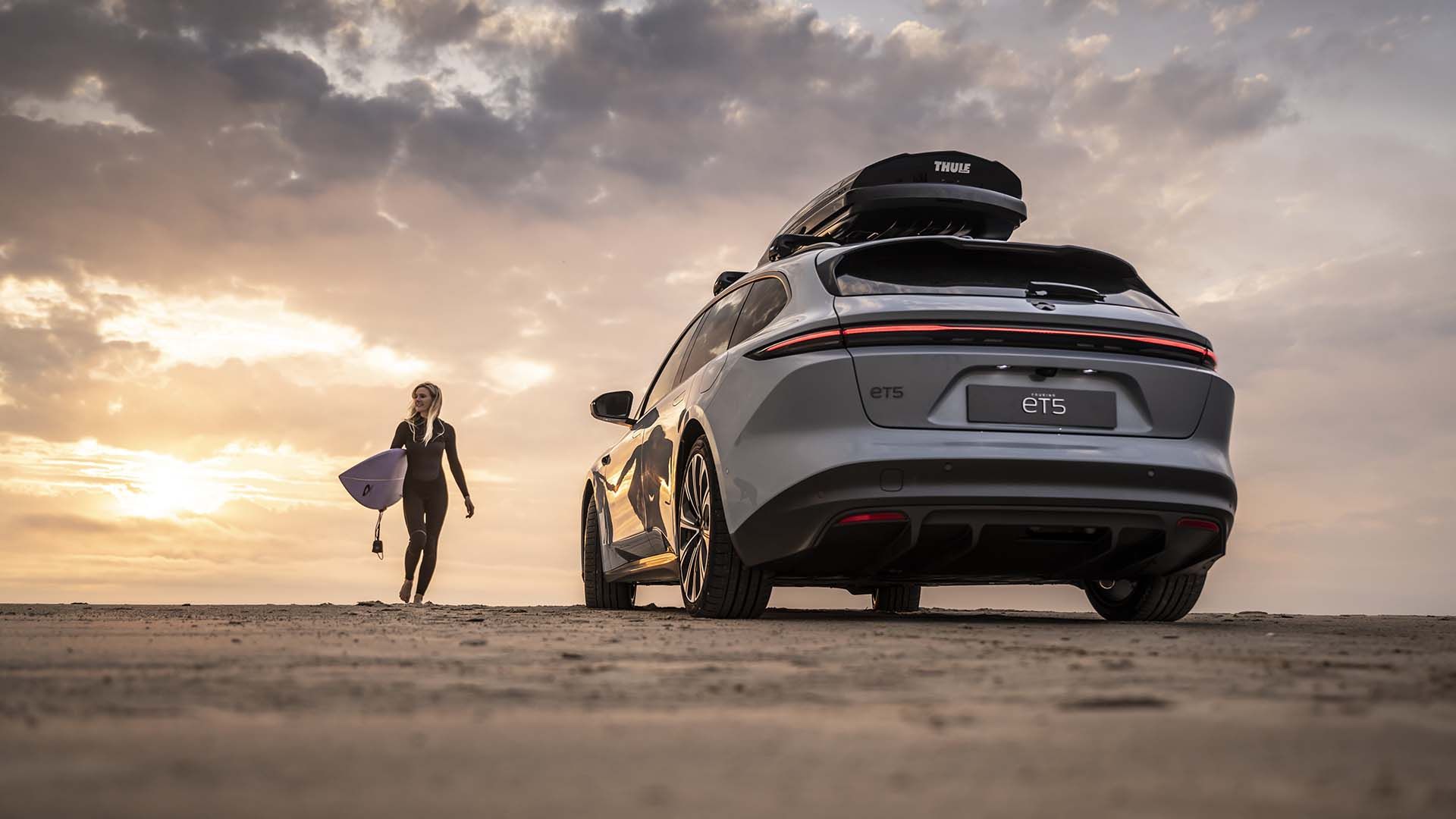Electric motorcycles are becoming more popular and there are now a wide variety of options available to suit different riders. Whether you’re a daily commuter or an off-road enthusiast, there’s an electric bike for you. Here are our top 15 picks in the e-motorcycle space.
Updated July 2023: This article has been updated with the latest electric motorcycles on the market, along with their pros and cons to help you make an informed decision.
The Sondors MetaCycle is an affordable electric motorcycle with a stylish design and features such as a low seat height and weight. It has a range of 60 miles, making it suitable for daily commuting. Although the brakes and rear shock are not the best, the affordable price tag makes up for it.
Pros
- A unique, head-turning style
- Great value for the price
- Fast charging speeds
Cons
- Brakes may feel inadequate
- Suspension isn’t the most comfortable
- The seat is hard and not easily removable
This Sci-Fi-Inspired Motorcycle Will Leave You Speechless With Its Monocoque Design
Super Soco TC
The Super Soco TC is a retro-styled electric motorcycle that is well-suited for city commuting. It has a top speed of 75 mph and offers a range of up to 78 miles with the dual battery setup. The TC comes with features such as LED lights, an anti-theft alarm, keyless ignition, and a semi-digital instrument cluster. However, it is not available in the U.S.
Pros
- The overall build quality is impressive
- Agile and easy to maneuver through the city
- Low seat height, suitable for shorter riders
Cons
- The relatively thin dealership network
- Braking may be inconsistent
- Not available in the U.S.
Pursang E-Tracker
The Pursang E-Tracker is a flat-track-inspired electric motorcycle with a stylish design. It features a tubular chrome-moly tubed frame and carbon-fiber bodywork. The E-Tracker has a range of 74 miles and a full-color TFT display that shows speed, range, riding mode, and battery life. It is available in Europe for approximately $10,052.
Pros
- The timeless retro-modern look
- Feels refined
- Carbon fiber body panels
Cons
- Long charging time
- No established dealership in the mainland USA
- Comes at a premium cost
Fuell Fllow
The Fuell Fllow is a powerful naked electric motorcycle with a peak power of 200 horsepower and a top speed of 170 mph. It has a claimed range of 146 miles and comes with unique Shift technology that allows riders to adjust the handlebar and footpeg position on the fly. The Fllow also features 360-degree cameras to warn riders about potentially dangerous objects and vehicles.
Pros
- Impressive performance numbers
- Adjustable handlebar and peg positions
- 360-degree cameras for safety
Cons
- Some parts may lack quality
- Expensive price tag
- Curb weight not confirmed
Cake Kalk&
The Cake Kalk& is an electric motorcycle with a unique design and a focus on sustainability. It is made from recycled materials and offers a range of 120 miles. The Kalk& is equipped with high-grade hardware and provides an easy and simple riding experience.
Pros
- High-grade hardware
- Easy to maneuver and ride
- Well-rounded fit and finish
Cons
- Pricey
- Availability may be limited
- Difficult to find parts in case of trouble
LiveWire Del Mar S2
The LiveWire Del Mar is an electric motorcycle designed for urban commuting. It offers a power output of 80 horsepower and a range of 110 miles in the city. The Del Mar is expected to arrive in showrooms by the latter part of 2023. It features modern-day amenities such as ride modes, TFT instrumentation, smartphone connectivity, LED lighting, and stability control from Bosch.
Pros
- Great handling characteristics
- Well-designed
- Decent power for city riding
Cons
BMW Motorrad presents ConnectedRide Smartglasses.
The BMW Motorrad ConnectedRide Smartglasses are bringing science fiction into reality. These innovative motorcycle goggles feature head-up display technology, similar to what you find in cars, and project vital information like navigation, speed, and gear directly into the rider’s field of vision in real time. This allows for safer and more anticipatory motorcycle riding.
Connecting the Smartglasses to your smartphone is a breeze using Bluetooth and the accompanying app. You can position the projection and adjust settings before and during your ride using the multicontroller on the motorcycle’s handlebars.
Not only do these smartglasses enhance riding safety with their individual user interface, but they also offer a high level of comfort. They are specifically designed for the needs of motorcyclists and can be customized to fit various helmets and face shapes. They are even comfortable enough for long day trips, thanks to the lithium-ion battery that provides up to ten hours of operation.
The BMW Motorrad ConnectedRide Smartglasses come with two sets of certified UVA/UVB lenses. One set is 85% transparent and ideal for helmets with built-in sun visors, while the other set has tinted lenses, turning the smartglasses into stylish sunglasses.
For those who wear glasses, there is an RX adapter available (+/- 4.5 diopters) that can be ordered online. The user manual of the ConnectedRide Smartglasses contains a QR code for easy access to this accessory.
The official presentation of the BMW Motorrad ConnectedRide Smartglasses will take place on July 7, 2023, during the BMW Motorrad Days event in Berlin.
The key features of the BMW Motorrad ConnectedRide Smartglasses include:
- Available in two sizes (M and L) with different nose pads.
- Two sets of lenses (tinted lens and 85% transparent lens) with an integrated light sensor and certified UVA/UVB filter.
- RX adapter for adjusting the lenses to the required visual acuity (up to max. 4.5 diopters).
- Bluetooth connectivity to smartphones via the BMW Motorrad Connected App.
- Real-time GPS data transfer from the app to the smartglasses.
- Head-Up function for navigation with individual display.
- Display of speed, speed limit, gear, and navigation information.
- Integrated light sensor and optics module for secure data transfer and display.
- Lithium-ion battery providing up to ten hours of operation.
- USB charging cable included.
- Operating temperature range of -10° to +50°C.
- Color: Anthracite.
- Recommended retail price (RRP): €690.00.
For more information about BMW motorcycles and BMW Motorrad rider equipment, visit the BMW Group PressClub website.
For media inquiries, please contact:
- Dominik Schaidnagel, Spokesperson BMW Motorrad
Telephone: +49-151-601-50181, Dominik.Schaidnagel@bmw.de - Tim Diehl-Thiele, Head of Communications BMW Motorrad
Telephone: +49-151-601-57505, Tim.Diehl-Thiele@bmw.de
Website: www.press.bmw.de
Email: presse@bmw.de
The BMW Group
The BMW Group is the world’s leading premium manufacturer of automobiles and motorcycles, with brands including BMW, MINI, Rolls-Royce, and BMW Motorrad. They also provide premium financial and mobility services. With over 30 production sites worldwide and a global sales network in more than 140 countries, the BMW Group sold nearly 2.4 million passenger vehicles and over 202,000 motorcycles worldwide in 2022.
In the financial year 2022, the BMW Group achieved a profit before tax of €23.5 billion on revenues amounting to €142.6 billion. Sustainability and efficient resource management are at the forefront of the company’s strategic direction, from the supply chain to production and the end-use phase of all products.
For more information, visit the following:
- Website: www.bmwgroup.com
- Facebook: www.facebook.com/BMWGroup
- Twitter: twitter.com/BMWGroup
- YouTube: www.youtube.com/BMWGroupView
- Instagram: www.instagram.com/bmwgroup
- LinkedIn: www.linkedin.com/company/bmw-group
What Does an FAA Certification Mean for Flying Cars?
The FAA certification is an important milestone for Alef as it strives to bring its flying car concept to reality. However, there is still much work to be done before the car becomes practical. The Model A, which is the company’s first prototype, is expected to have a payload capacity of only 200 pounds, enough for one passenger and some baggage. Alef plans to increase the capacity in future models. The vehicle is designed to function as both a car on the road and a drone-like aircraft in the sky. It has a driving range of 200 miles and a flying range of 110 miles. The range is expected to be higher in a different prototype that will utilize hydrogen fuel cells instead of electric batteries.
Jim Dukhovny, the CEO of Alef, emphasizes that the FAA’s certification brings them closer to providing people with an environmentally friendly and time-saving commute. He believes this achievement is a significant leap forward in the integration of planes and cars. Despite the hefty price tag of $300,000, Alef has already received pre-orders for its flying car. The company plans to bring the vehicle to market by 2025. With FAA approval in hand, the production and supply of the flying car could follow suit in the near future.
The car features a unique design with a passenger bubble surrounded by eight propellers, akin to a drone. This configuration enables vertical take-off. As the car transitions to forward flight, one side of its body becomes the top wing of the aircraft, while the other side becomes the bottom wing. Testing for this transition with a human passenger has yet to be conducted, but with the FAA’s certification and the likelihood of securing additional funding, Alef will likely proceed with such tests in due course.
Here’s Why China Has Significantly More EV Models Than The U.S.
China is currently leading the electric vehicle (EV) race. There’s no denying it and that’s the reality whether you like it or not. Whether that will be sustained in the years to come is still unknown, of course, but in the here and now, China is the world’s EV hotspot. Thanks to government policies and the realization that they can’t compete with other nations who already have nearly a century of experience with the internal combustion engine (ICE), China built an economy around EVs and the components needed to build one. The result? China is the world’s biggest EV market, accounting for more than half of global EV sales in 2022, and that also means their EV choices are far more diverse than any nation–more so the United States.
China Has No Legacy, So It’s Building One
Okay, so the word “choice” could be an oxymoron since government policies led Chinese automotive companies to develop EVs and then make its citizens buy them. Decades and billions of dollars later, there are already more than 100 EV companies in China all vying for the money of its citizens. This is on top of prominent Chinese premium EV brands like Nio, Xpeng, and Li Auto who are making headlines globally, while other more mainstream brands like BYD, GWM’s Ora, and Geely’s Zeekr are already taking away market share from Volkswagen–the biggest automaker in terms of overall sales in China.
Or at least that used to be the case. BYD has dethroned Volkswagen to become the best-selling automaker in China, thus creating a problem for the German brand that used to command a significant market share in China. With Volkswagen having fewer and at the same time, more expensive EVs than BYD, you could say that the downfall of the brand in the world’s biggest EV market is already unsurprising. Ask anyone why they like a car from a certain nation, and you’ll probably end up with remarks on German cars being luxurious and extraordinarily stable at high speeds; Italian cars being beautiful and resonant in terms of engine noise; or Japanese cars being highly tunable and reliable. China? Well, their brands don’t carry decades of legacy, which in the EV age was a good thing for them. Ferrari, for instance, is known for its singing V-8s and V-12s, but if you take that away, what defines Ferrari? On the other hand, Chinese EV startups are still building their legacy, giving them infinite room to innovate and carve out their own identity at a time when everyone else is still protecting their identity from the ICE age.
Strength In Numbers… And In Innovation
China’s wide range of EVs not only outnumbers that of what the United States has to offer but the design and technology that’s been poured into their EVs is also unbelievably good. Nio is one of the most prominent premium EV brands in China, and people are willing to pay Tesla money for its EVs. The brand’s hallmark features like its cute Nomi personal assistant and battery swap technology that Tesla has abandoned are stuff you won’t find in EVs from Western brands.
What about in terms of design? China’s EV brands also have you covered. With so much choice in the first place, there’s practically an EV for every design taste. Perhaps one of the EV brands that stand out in China in terms of design is HiPhi. With three models called the HiPhi X, HiPhi Y, and HiPhi Z, boring is one adjective you will never associate with how they look. A lot of car enthusiasts complain about how cars look too similar nowadays. Well, HiPhi seems to have gotten the memo and none of their cars conform to generic cookie-cutter standards. From aggressive lines, rakish curves, and even LED taillights that are able to display pre-programmed GIFs or animated icons, HiPhi is able to push the boundaries of design and not conform to how the world sees car design.
Off-roaders are currently a sensation in North America, and you can bet that China’s EV start-ups have them, too. One of the most recent to make headlines worldwide is the BYD YangWang U8. Comical name aside, the U8 is part of BYD’s new YangWang sub-brand of high-end EVs, including the U9 supercar. Even though this is a large off-roader, it has supercar-like specs with its quad-motor 1,100-horsepower drivetrain and three-second 0-62 mph time. It can even 360-degree tank turns and float on water thanks to the body being waterproof.
And The Chinese Market Has Spoken, Too
It’s common knowledge that China is also the world’s biggest car market, which is why a plethora of global brands treat China as an important market for their bottom line. This is especially true for German luxury brands, where they’ve practically doubled down in their operations in China thanks to Chinese buyers considering these cars as their aspirational vehicles. Unfortunately, these brands saw disappointing foot traffic at the recent Auto Shanghai 2023. With the traditional designs of German luxury cars and their lack of EV options (Porsche even chose the show to hold the global unveiling of the Cayenne, which is not available as an EV), wealthy Chinese buyers instead lusted over the booths of brands like Nio, Xpeng, and Li Auto.
That was the case when New York Times interviewed the Cao family living in Shanghai. Formerly the owner of two Porsches, Mr. Ben Cao downsized to one Porsche 911 and the other car is now an electric luxury SUV with a range-extender gasoline engine from Li Auto called the L9. The reason why he chose the L9? Mr. Cao says that most designs of foreign automakers are dull. “They are far behind, no matter whether it is the U.S. ones and even the German ones,” he said. “They don’t even seem to be in the same age.”
Foreign automakers in China are introducing EVs that look like their gasoline counterparts in a bid to create a gradual transition, but for Chinese buyers, these cars end up looking too boring and not groundbreaking enough. As mentioned, since Chinese EV start-ups have freedom from legacy, this gives them room to be creative unlike the established foreign brands whose cars suddenly seemed out of date. This is a sentiment echoed by Felix Kilbertus, Chief Creative Officer at Pininfarina. He told the New York Times at the Auto Shanghai 2023, “Some of that comes from the freedom from legacy.”
But, There’s A Catch
In order for these Chinese EVs brands to compete with established brands globally, they have to not just offer better products but also sell them at a lower cost than established brands. As a result, most of these Chinese EV startups, with the exception of BYD, are generating losses instead of profits. Nio, however, is finally narrowing down its losses and expects to be profitable by the end of 2023. It must be noted that this pattern of losses and then eventually becoming profitable is the same path that Tesla took when the brand was launched by Elon Musk. Also, with more than 100 EV start-ups in China, choices for EVs are indeed very diverse, but it also means that market saturation for EVs is going to come sooner rather than later.
Thankfully, in the United States, there are also a couple of EV start-ups like Lucid and Rivian who are making waves with their vehicles. Like China’s EV start-ups, these two brands still aren’t profitable, though they aim to eventually make a profit in the coming years. Ford and GM have also doubled down on their EV development, which means while the United States still won’t have as many EV choices as China right now, that gap will definitely be narrowed down eventually.

